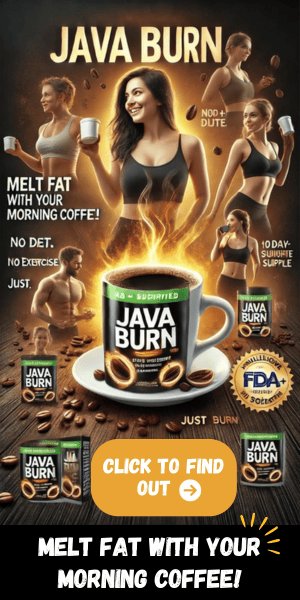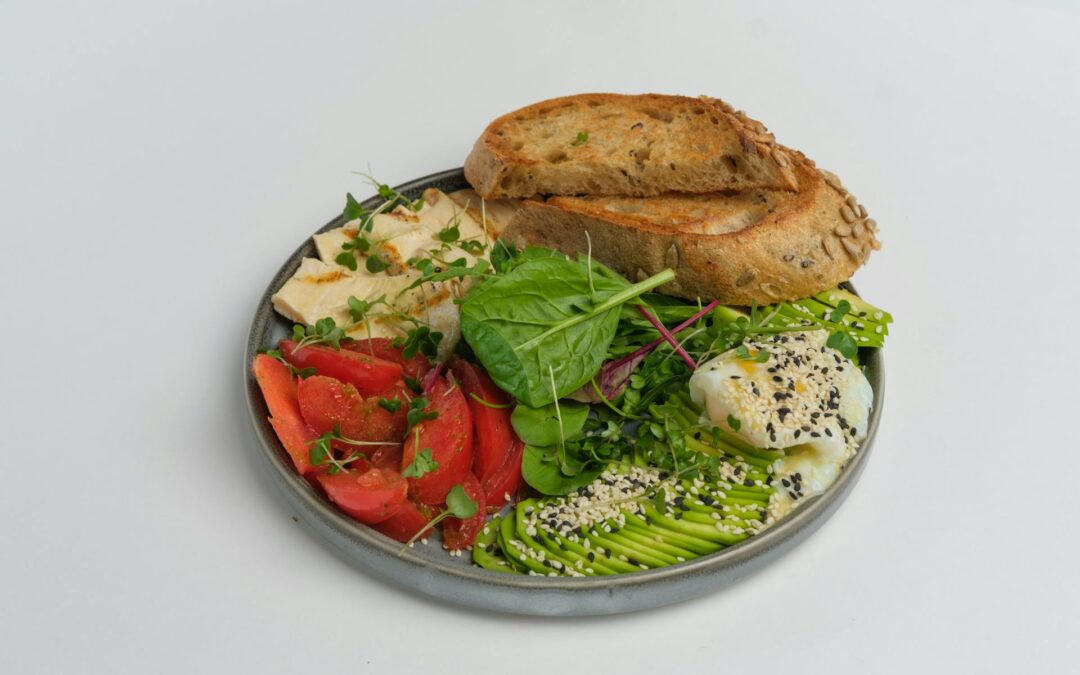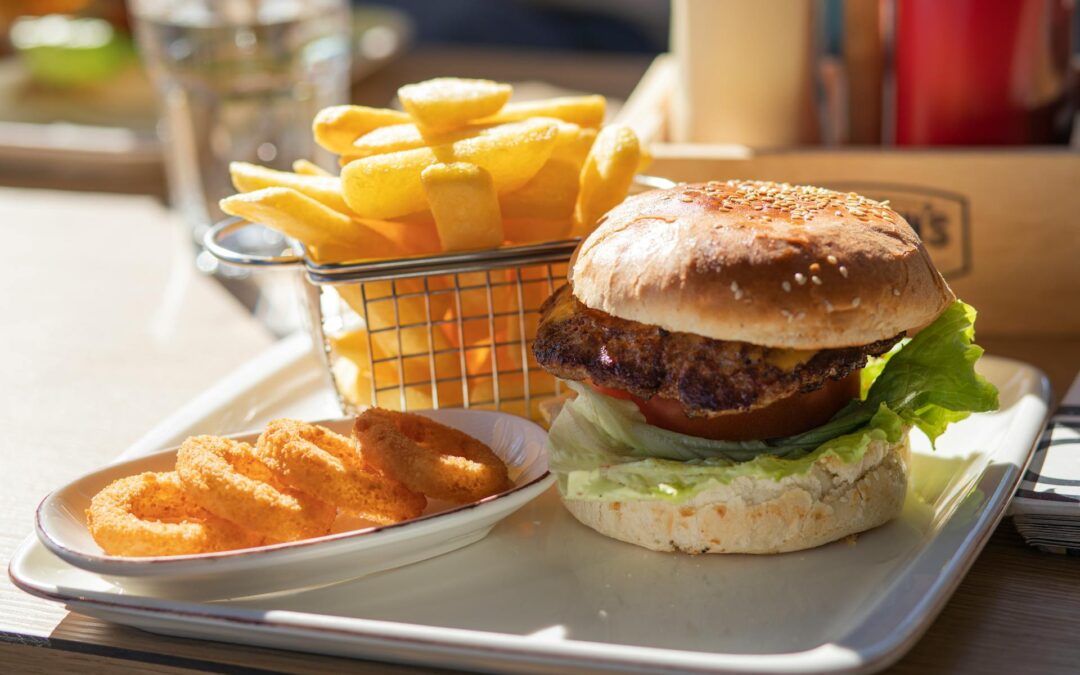Inflammation is like a fire in the body—it can smolder quietly or flare up, wreaking havoc on your health. The good news? Your diet can fan the flames or put them out entirely. For those following a low-carb lifestyle, incorporating anti-inflammatory foods can be a game-changer for your health and waistline. In this article, we’ll explore the best low carb anti-inflammatory foods to help you feel your best while sticking to your dietary goals.
Understanding Inflammation
Inflammation is a natural process that your body uses to protect itself from harm. Think of it as your body’s internal alarm system. When you get a cut, catch a cold, or sprain your ankle, inflammation is part of the healing process. But while short-term (or acute) inflammation is helpful, chronic inflammation is like an alarm that never shuts off, causing more harm than good. (1)
What Is Inflammation?
Inflammation is your immune system’s response to injury, infection, or irritants. It’s how your body defends itself and starts the healing process. The hallmarks of acute inflammation include:
- Redness: Increased blood flow to the affected area.
- Swelling: Fluid builds up to protect tissues.
- Heat: Your body sends warm blood to speed up healing.
- Pain: Nerve endings become sensitive to prevent further injury.
This is all normal and temporary—your body resolves the inflammation once the threat is eliminated.
Acute vs. Chronic Inflammation
- Acute Inflammation: This is short-lived and resolves quickly. For example, if you sprain your ankle, your body triggers acute inflammation to heal the damaged tissues.
- Chronic Inflammation: This occurs when the immune system remains activated for too long. Instead of helping, it begins to harm healthy cells, tissues, and organs. Over time, chronic inflammation can contribute to serious conditions like:
- Heart disease
- Diabetes
- Arthritis
- Autoimmune disorders
- Even certain cancers
What Causes Chronic Inflammation?
Chronic inflammation doesn’t just happen out of nowhere. It’s often linked to lifestyle and environmental factors. Some of the most common triggers include: (2)
- Poor Diet: Consuming too many refined carbs, sugars, and processed foods can fuel inflammation. Foods like white bread, soda, and fast food are the usual suspects.
- Stress: Chronic stress keeps your body in “fight or flight” mode, which increases inflammatory responses.
- Lack of Exercise: Physical activity helps regulate your immune system, but a sedentary lifestyle can do the opposite.
- Obesity: Excess fat tissue releases pro-inflammatory molecules, contributing to a constant state of low-grade inflammation.
- Smoking and Alcohol: Both of these habits can irritate and inflame tissues throughout your body.
- Toxins and Pollution: Long-term exposure to environmental toxins can also keep your immune system on high alert.
How Chronic Inflammation Affects Your Body
Think of chronic inflammation as a slow burn that gradually wears down your body’s defenses. Over time, this can lead to:
- Damage to Blood Vessels: Increasing the risk of heart disease and stroke.
- Joint Pain and Stiffness: Seen in conditions like rheumatoid arthritis.
- Digestive Issues: Chronic inflammation can irritate the gut lining, potentially leading to conditions like irritable bowel syndrome (IBS).
- Weakened Immune System: Ironically, prolonged inflammation can make it harder for your body to fight infections.
How Diet Impacts Inflammation
The saying “you are what you eat” holds when it comes to inflammation. Certain foods can either fuel the fire or help put it out. For example: (3)
- Pro-inflammatory Foods:
- Refined sugars (e.g., candy, baked goods)
- Trans fats (e.g., fried foods, margarine)
- Refined carbs (e.g., white bread, pasta)
- Processed meats (e.g., hot dogs, bacon)
- Anti-inflammatory Foods (Ideal for a low-carb lifestyle):
- Leafy greens
- Fatty fish
- Berries
- Nuts and seeds
- Olive oil
By reducing pro-inflammatory foods and embracing low carb anti-inflammatory foods, you can significantly lower your risk of chronic inflammation and its related conditions.
How to Spot Chronic Inflammation
Sometimes, chronic inflammation can be sneaky, presenting subtle symptoms that are easy to dismiss. Be on the lookout for:
- Fatigue
- Brain fog
- Unexplained aches and pains
- Digestive issues (bloating, diarrhea, or constipation)
- Skin problems like acne or eczema
If you’re experiencing these symptoms, it’s worth consulting a healthcare professional to rule out chronic inflammation.
Why Diet Matters for Inflammation
Inflammation is a critical part of your body’s defense system, but it’s a double-edged sword. While acute inflammation is beneficial for healing, chronic inflammation can cause long-term damage to your health. One of the most powerful ways to manage inflammation is through the food you eat. Your diet acts as either a friend or foe to your body’s inflammatory response, making food choices critical for reducing inflammation and promoting overall well-being. (4)
The Connection Between Food and Inflammation
Every bite you take either contributes to inflammation or helps reduce it. This is because certain foods influence the production of inflammatory markers, also known as cytokines, in your body.
- Pro-inflammatory foods can increase cytokines, triggering chronic inflammation.
- Anti-inflammatory foods, on the other hand, help lower these markers, calming your body’s inflammatory response.
By being mindful of your diet, you can take charge of how your body reacts to stress, injuries, and even illnesses.
How Inflammatory Foods Affect the Body
When you consistently eat foods that promote inflammation, you’re essentially keeping your immune system in overdrive. This can lead to:
- Weight Gain and Obesity: Excess sugar and refined carbs not only spike inflammation but also promote weight gain, which further increases inflammatory markers.
- Chronic Diseases: A pro-inflammatory diet has been linked to conditions like type 2 diabetes, heart disease, and arthritis.
- Gut Health Issues: Foods like processed meats and artificial additives can disrupt your gut microbiome, leading to inflammation in the digestive tract.
- Weakened Immune System: Over time, inflammation caused by diet can weaken your immune defenses, making you more susceptible to infections.
Key Foods That Fuel Inflammation
Certain foods are notorious for their inflammatory effects. If you want to manage inflammation, consider minimizing or avoiding these:
- Refined Sugars: Found in candies, baked goods, and sugary drinks, refined sugars can lead to blood sugar spikes and increased inflammatory responses.
- Trans Fats: These harmful fats, often found in fried foods and margarine, are directly linked to higher inflammation levels.
- Refined Carbohydrates: White bread, pasta, and other refined carbs cause blood sugar spikes, which contribute to inflammation.
- Processed Meats: Foods like bacon, sausages, and deli meats contain advanced glycation end products (AGEs), compounds that promote inflammation.
- Excess Alcohol: Drinking too much alcohol can irritate tissues and create an inflammatory response throughout your body.
The Power of Anti-Inflammatory Foods
Thankfully, not all foods are bad news. By focusing on low carb anti-inflammatory foods, you can lower inflammation and support your body’s healing processes. These foods are rich in antioxidants, healthy fats, and nutrients that fight oxidative stress and reduce inflammatory markers. (5)
- Fatty Fish: Salmon, mackerel, and sardines are rich in omega-3 fatty acids, which are known to reduce inflammation.
- Leafy Greens: Spinach, kale, and Swiss chard are packed with antioxidants and other compounds that combat inflammation.
- Berries: Blueberries, raspberries, and strawberries are low in carbs and loaded with polyphenols, which help neutralize free radicals.
- Olive Oil: Extra virgin olive oil contains oleocanthal, a compound with anti-inflammatory properties.
- Nuts and Seeds: Almonds, walnuts, chia seeds, and flaxseeds provide healthy fats and antioxidants.
The Role of Low Carb Diets in Inflammation
Low carb diets can be particularly effective in reducing inflammation. By minimizing carb intake, you stabilize blood sugar levels, which is key to lowering inflammation. Here’s how: (6)
- Reduced Blood Sugar Spikes: High blood sugar levels can lead to the production of pro-inflammatory cytokines. A low-carb diet helps prevent these spikes.
- Better Insulin Sensitivity: By reducing carb intake, you improve insulin sensitivity, which is closely linked to lower inflammation levels.
- Fat Loss: Excess fat tissue produces inflammatory molecules, so losing weight on a low-carb diet can directly reduce inflammation.
- Gut Health: Low carb diets often emphasize whole, unprocessed foods that promote a healthy gut microbiome, which plays a crucial role in controlling inflammation.
How to Create an Anti-Inflammatory Low Carb Diet
Switching to a low carb diet that reduces inflammation doesn’t have to be complicated. Here are some practical tips:
- Focus on Whole Foods: Stick to minimally processed foods like fresh vegetables, fish, nuts, and seeds.
- Choose Healthy Fats: Incorporate foods like avocados, olive oil, and fatty fish into your meals.
- Prioritize Vegetables: Opt for non-starchy vegetables like broccoli, cauliflower, zucchini, and spinach.
- Watch Your Carb Intake: Keep an eye on your daily carb consumption to maintain low-carb benefits.
- Add Anti-Inflammatory Spices: Use turmeric, ginger, and garlic to flavor your meals while fighting inflammation.
How Quickly Can Diet Changes Impact Inflammation?
The beauty of dietary changes is that their effects can be felt relatively quickly. For many people, adding anti-inflammatory foods and removing pro-inflammatory ones can lead to noticeable improvements within a few weeks. You might experience:
- Less joint pain
- Better digestion
- More energy
- Improved mental clarity
Consistency is key, though—long-term benefits require long-term commitment to a healthier diet.
Other Lifestyle Factors That Complement Diet
While diet is essential, it’s only one piece of the puzzle. To fully manage inflammation, consider adopting these habits:
- Exercise Regularly: Physical activity helps regulate your immune system and lowers inflammation.
- Get Quality Sleep: Poor sleep is a major driver of chronic inflammation. Aim for 7–9 hours of quality sleep each night.
- Manage Stress: Chronic stress fuels inflammation, so incorporate relaxation techniques like meditation or yoga into your routine.
Top Low Carb Anti-Inflammatory Foods
1. Fatty Fish
If you’re not already eating fatty fish like salmon, mackerel, or sardines, it’s time to start. These fish are packed with omega-3 fatty acids, which have been shown to reduce inflammation. Studies even suggest they can help lower inflammatory markers in the body.
- Why it works: Omega-3s directly combat inflammation by reducing pro-inflammatory substances.
- How to enjoy it: Grill salmon with olive oil, or snack on sardines straight from the can.
2. Leafy Greens
Spinach, kale, and Swiss chard are not only low in carbs but also high in antioxidants like vitamin C and beta-carotene. These nutrients fight off harmful free radicals that can trigger inflammation.
- Why it works: Antioxidants neutralize free radicals, protecting your cells from damage.
- How to enjoy it: Toss a handful of spinach into your morning omelet or enjoy a kale salad with avocado.
3. Berries
Blueberries, raspberries, and strawberries are sweet, low-carb, and anti-inflammatory superstars. They’re loaded with polyphenols and other plant compounds that can lower inflammation levels.
- Why it works: Berries contain anthocyanins, which have powerful anti-inflammatory effects.
- How to enjoy it: Add a few berries to your yogurt or snack on them plain.
4. Avocados
Avocados are a staple for any low-carb diet, and they’re rich in monounsaturated fats and antioxidants that fight inflammation. They also contain potassium, which supports overall health.
- Why it works: The healthy fats in avocados reduce inflammation and improve heart health.
- How to enjoy it: Spread avocado on low-carb crackers or blend it into a creamy smoothie.
5. Olive Oil
Extra virgin olive oil is often called “liquid gold,” and for good reason. It’s full of oleocanthal, a compound with similar anti-inflammatory effects as ibuprofen.
- Why it works: Oleocanthal reduces inflammatory enzymes in the body.
- How to enjoy it: Drizzle olive oil over salads or use it as a base for homemade dressings.
6. Nuts and Seeds
Almonds, walnuts, chia seeds, and flaxseeds are rich in healthy fats, fiber, and antioxidants. They’re perfect for snacking or adding to meals.
- Why it works: These foods combat inflammation and improve heart health.
- How to enjoy it: Sprinkle chia seeds on your yogurt or snack on a handful of almonds.
7. Turmeric
Turmeric’s active compound, curcumin, is a powerhouse when it comes to fighting inflammation. Pair it with black pepper to enhance absorption.
- Why it works: Curcumin targets inflammatory pathways at the molecular level.
- How to enjoy it: Add turmeric to soups, teas, or even scrambled eggs.
8. Ginger
Ginger isn’t just for stomach aches—it’s also a natural anti-inflammatory. The gingerols in ginger help reduce inflammatory markers.
- Why it works: Ginger reduces pain and inflammation, especially in conditions like arthritis.
- How to enjoy it: Brew ginger tea or grate fresh ginger into stir-fries.
9. Garlic
Garlic doesn’t just boost flavor; it’s also a potent anti-inflammatory. Allicin, its active compound, fights inflammation and supports your immune system.
- Why it works: Garlic reduces the production of inflammatory substances in the body.
- How to enjoy it: Use fresh garlic in marinades, sauces, or roasted vegetables.
10. Green Tea
Green tea is rich in catechins, compounds that lower inflammation and support metabolic health. It’s a great low-carb beverage option.
- Why it works: Catechins fight oxidative stress and reduce inflammation.
- How to enjoy it: Enjoy a hot cup of green tea or use it as a base for smoothies.
Meal Planning for Low Carb and Anti-Inflammatory Benefits
Meal planning is a powerful strategy for those aiming to combine the benefits of a low-carb diet with anti-inflammatory eating. By organizing your meals in advance, you can ensure your daily diet is rich in low carb anti-inflammatory foods, making it easier to stick to your health goals. Not only does this approach save time and reduce stress, but it also helps you consistently make choices that nourish your body and fight inflammation. (7)
Why Meal Planning Matters
When it comes to managing inflammation and sticking to a low-carb diet, meal planning is your best friend. Here’s why:
- Consistency: Planning ahead ensures you consistently eat anti-inflammatory foods, avoiding processed and pro-inflammatory options.
- Portion Control: Pre-planned meals make it easier to manage portion sizes, which helps regulate blood sugar and reduces inflammatory triggers.
- Balanced Nutrition: Meal planning helps you include a variety of nutrient-rich foods, ensuring you get enough vitamins, minerals, healthy fats, and protein.
- Time Efficiency: Prepping meals in advance saves time during busy weekdays, reducing the temptation to reach for unhealthy, quick-fix options.
Essential Components of a Low Carb Anti-Inflammatory Meal Plan
To create a successful meal plan, include the following components:
- Lean Protein: Focus on high-quality protein sources like fatty fish (salmon, mackerel), poultry, eggs, and plant-based options like tofu.
- Healthy Fats: Add foods rich in monounsaturated and omega-3 fatty acids, such as avocados, olive oil, nuts, and seeds.
- Low-Carb Vegetables: Choose nutrient-dense, non-starchy vegetables like spinach, kale, zucchini, cauliflower, and broccoli.
- Anti-Inflammatory Spices: Incorporate turmeric, ginger, cinnamon, and garlic to enhance flavor while reducing inflammation.
- Hydration: Include beverages like water, green tea, or herbal teas that support hydration and reduce inflammation.
Sample Meal Plan for Low Carb and Anti-Inflammatory Benefits
Here’s a practical 3-day meal plan to inspire your healthy eating routine:
Day 1
- Breakfast: Spinach and avocado omelet cooked in extra virgin olive oil, served with green tea.
- Snack: A handful of walnuts and a few raspberries.
- Lunch: Grilled salmon over a kale salad with olive oil, lemon dressing, and sprinkled flaxseeds.
- Snack: Sliced cucumber with a turmeric and yogurt dip.
- Dinner: Garlic-roasted chicken thighs with sautéed zucchini and cauliflower rice.
Day 2
- Breakfast: Chia seed pudding made with unsweetened almond milk, topped with blueberries and a dash of cinnamon.
- Snack: Celery sticks with almond butter.
- Lunch: Grilled mackerel with steamed broccoli and a side of arugula salad dressed with olive oil.
- Snack: A boiled egg and a few slices of avocado.
- Dinner: Herb-crusted baked cod with roasted Brussels sprouts and a spinach sauté.
Day 3
- Breakfast: Scrambled eggs with turmeric, garlic, and wilted Swiss chard, served with a cup of green tea.
- Snack: A handful of almonds and sliced strawberries.
- Lunch: Zucchini noodles with pesto, topped with grilled shrimp and cherry tomatoes.
- Snack: Sliced bell peppers with a guacamole dip.
- Dinner: Baked chicken breast with cauliflower mash and roasted asparagus.
Tips for Effective Meal Planning
- Start Small: If meal planning feels overwhelming, begin by planning just one meal per day, such as breakfast, and gradually expand to other meals.
- Batch Cooking: Prepare larger quantities of staples like grilled chicken, roasted vegetables, or hard-boiled eggs, and store them for easy use throughout the week.
- Use Storage-Friendly Recipes: Focus on meals that can be stored in the refrigerator or freezer without losing quality, like soups or casseroles made with low carb anti-inflammatory foods.
- Invest in Containers: Use airtight containers to store prepped ingredients and cooked meals to maintain freshness and flavor.
- Create a Grocery List: Stick to a shopping list filled with whole, nutrient-dense foods to avoid impulse purchases of unhealthy options.
Snack Ideas for Low Carb and Anti-Inflammatory Eating
Snacks are often overlooked in meal planning, but they’re crucial for staying on track. Here are some anti-inflammatory, low-carb snack ideas:
- Sliced cucumbers and cherry tomatoes with guacamole
- Hard-boiled eggs sprinkled with paprika
- A handful of mixed nuts (walnuts, almonds)
- Olives and cheese cubes
- Berries with unsweetened coconut cream
- Chia seed pudding with a dash of cinnamon
- Veggie sticks with tahini or almond butter
Meal Prep Hacks for Busy People
Life gets busy, but that doesn’t mean your health should take a backseat. Use these hacks to make meal prep manageable:
- Freeze Essentials: Prep and freeze smoothie packs or chopped vegetables to save time.
- Repurpose Ingredients: Cook once and use the same ingredient in multiple meals, like grilled chicken for salads, wraps, and bowls.
- Use Time-Saving Gadgets: Pressure cookers, slow cookers, and food processors can significantly cut down prep time.
Benefits of Meal Planning for Reducing Inflammation
When you take the time to plan your meals, you’re not only saving time and money but also actively working to reduce inflammation in your body. Here’s how meal planning contributes to lower inflammation:
- Avoids Pro-Inflammatory Foods: By having meals prepped, you’re less likely to grab processed, high-sugar options.
- Balances Nutrients: Ensures you’re getting a variety of nutrients that combat inflammation, such as omega-3 fatty acids and antioxidants.
- Stabilizes Blood Sugar Levels: Keeps carb intake low and consistent, preventing spikes that trigger inflammation.
The Bottom Line
Adding low carb anti-inflammatory foods to your diet is one of the best things you can do for your health. These nutrient-packed choices can help calm inflammation while supporting your low-carb goals. So, go ahead—grab that avocado, sip on some green tea, and enjoy the journey to better health!
FAQs
Can low-carb diets reduce inflammation?
Yes! Low-carb diets can reduce inflammation by lowering blood sugar and insulin levels, often triggering inflammatory responses.
Are all fats anti-inflammatory?
No, but healthy fats like those found in avocados, fatty fish, and olive oil can significantly reduce inflammation.
How quickly do anti-inflammatory foods work?
The timeline varies, but some people notice reduced inflammation within weeks of making dietary changes.
Can supplements replace anti-inflammatory foods?
Supplements can help, but whole foods offer a range of nutrients and benefits that supplements alone can’t provide.
What are the signs of chronic inflammation?
Common signs include joint pain, fatigue, and digestive issues. If you suspect chronic inflammation, consult a healthcare professional.







0 Comments